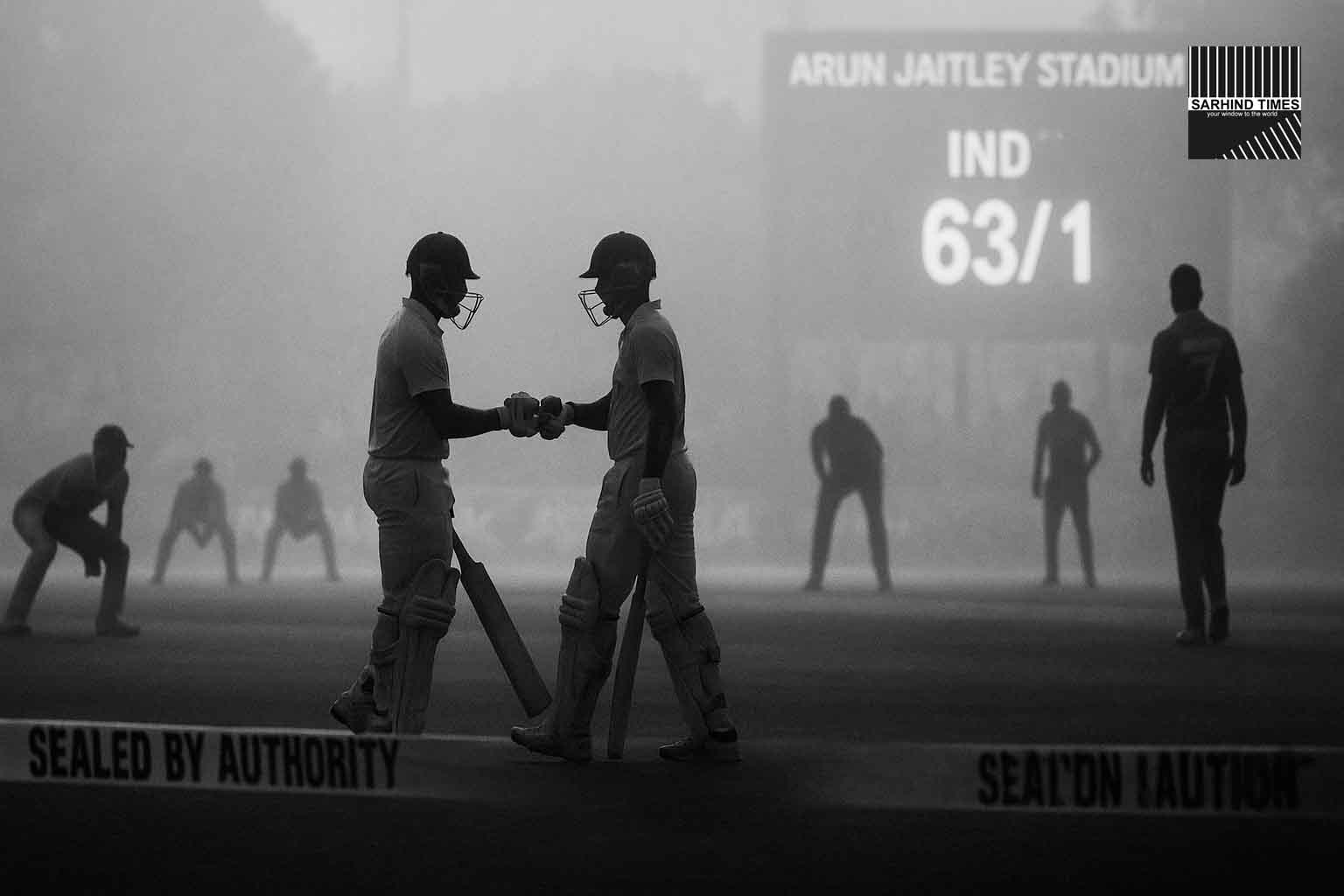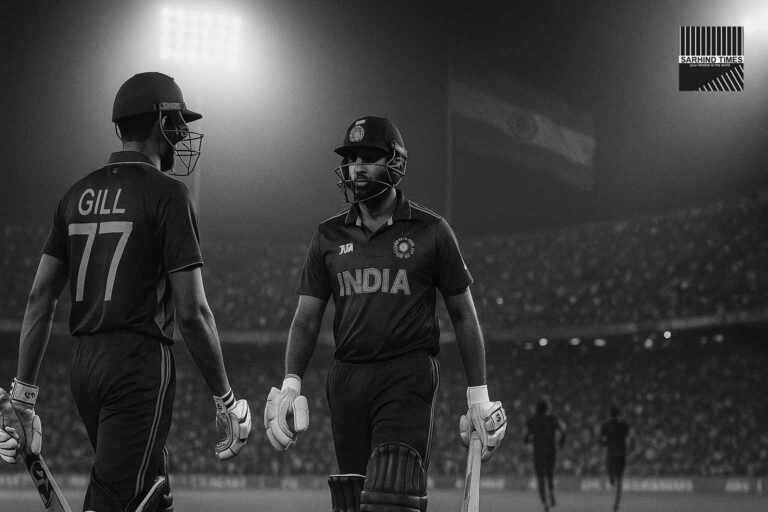Dateline: New Delhi | Tuesday, October 14, 2025 (IST)
In the chill of an early autumn morning at the Arun Jaitley Stadium, India will walk out needing 58 runs to clinch a 2–0 series sweep over a West Indies side that turned a mismatched contest into a flicker of drama. At 63/1 overnight in pursuit of 121, KL Rahul (25*) and Sai Sudharsan (30*) have first rights on the spoils—a modest tally by Test standards, yet wrapped in enough narrative threads to keep a morning audience wide awake: the follow-on debate; a pair of Caribbean centuries against the odds; the whiff of variable bounce; and the shadow of India’s recent habit of finishing Tests before the fifth day.
The State of Play: India’s Target, West Indies’ Resistance
When the curtain dropped on Day 4, India had nine wickets in hand and 58 to get—a mathematical certainty for some, a psychological banana skin for others. The scoreboard’s smallness belied the journey to reach it. Bowled out cheaply in their first dig, the West Indies mounted a defiant second-innings stand of 390, powered by a bracing century from John Campbell (115) and a calm, senior-pro’s response from Shai Hope (103)—an improbable twin-ton axis that stretched the Test to Day 5 and earned the tourists a measure of dignity they craved.
For India, the overnight pair offers stylistic contrast and tactical clarity. Rahul has batted like a meticulous mason—brick by brick, seam by seam—while Sudharsan has matched tempo with temperament, a left-hander’s stillness amid noise. Their task is almost prosaic: play percentage cricket through the first 30–45 minutes, respect anything that misbehaves off length, then let the chase shrink on its own. The pitch has slowed, the new ball’s bite is dulled, but first-hour seam remains an ambush zone—especially for a side that’s been told all night that “it’s only 58.”
The Follow-On Question: Romance vs. Risk
The follow-on has always been theatre in India. Enforce it, and you’re accused of revelling in dominance if the opposition revives; decline, and you’re damned for “softness.” Here, India pressed the pedal, an aggressive choice that opened a path for the West Indies to bat long, dull the surface, and ask India to chase late. Was it wrong? The scorecard says no; the storyline says it gave life to a Test threatening to end by tea on Day 4.
Two things can be true. One: enforcing the follow-on maximised victory probability given bowling form and time left. Two: it created conditions for Campbell and Hope to script something West Indian cricket badly needed—a day where the bat spoke louder than narratives about rebuilding. Even the mild grumbling in commentary boxes has the tone of admiration for an underdog’s appetite for a long lunch.
Campbell’s Hundred: A Day the Windies Can Carry Home
West Indies cricket is built on memory—of afternoons when somebody unheralded made the day theirs. John Campbell’s maiden Test hundred was exactly that: an afternoon of clarity and control, the kind of innings that folds into a career and stares back when times are lean. In the ledger, it read 115. In context, it became the first hundred by a Windies opener in India in 23 years, a statistic with enough weight to bend conversation back toward the simple question: what if the Caribbean could keep their best players on the park long enough to turn such one-day blooms into a garden.
Hope’s 103 was a partner’s pact: you take the new ball, I’ll take the spinners; you play tall, I’ll play soft-hands. The pair wrapped over 100 overs around India’s attack and, for a while, made the home side reset fields rather than just rehearse them. A late-session second wind from India’s quicks snapped the resistance, but not before the stadium had the rare pleasure of an away side earning applause rather than indulgence.
India’s Quick Men: Attrition, Heat and the Long Spell
It’s remarkable that the most human image of the Test might be Mohammed Siraj crumpling on the turf after a draining post-lunch spell on Day 4, the support staff hovering like medics around a marathoner. A few overs later he was back, rhythm stitched, proof that elite fast bowling in the subcontinent is as much a heat-management act as a technical craft. Jasprit Bumrah’s non-negotiable length, Kuldeep Yadav’s second-wind guile and Ravindra Jadeja’s marathon overs sealed the frame: India bowled enough good balls in enough good areas to crack the West Indies twice, even if the tourists wrote a better second act than expected.
The Chase: How Small Targets Grow Fangs
Chasing 121 with nine wickets in hand invites aggressive instincts, but cricket’s museum warns against hubris. Three pitfalls commonly turn small chases into tabloid stories:
- New-Ball Tease: If the Kookaburra is only 15–20 overs old, a session of fourth-day sun can coax lateral movement for just long enough to make edges carry to cordon. India’s guard here is good judgement and late movement discipline—play late, leave late, drive even later.
- Variable Bounce: Old Delhi strips can cough a shooter just as you’re walking to the punch. The cure is boring: play straighter, ride the bounce with soft hands, and leave anything climbing at the splice.
- Narrative Pressure: “Only 58” can be the most dangerous two words in a dressing room. The last thing India needs is rhythm-breaking emotion—singles into pockets is the fast path home.
Given Rahul’s natural conservatism and Sudharsan’s compact control, the blueprint is baked. If a wicket falls, India’s middle has depth; if a sequence of jaffas arrives, so be it—defence buys time, and time is India’s ally.
Selection Notes: A Young Core, A Flexible Spine
The XI for this Test has the feel of a transitional template: a top order blending youth and recalibration, a captain in Shubman Gill learning to breathe twice before deciding once, and an all-round mix that can be tilted toward spin or seam without losing identity. The quiet subplot has been Sudharsan’s poise in just a handful of Tests at home—an economy of movement that suggests a player with a long-form brain. Around him, Rahul’s role has been a calming drumbeat since Day 1: if the pitch misbehaves, he simply plays a smaller shot. If it sleeps, he stretches his arms a couple of inches further and works mid-wicket.
The other strategic note is the use (and non-use) of auxiliary bowling. Pundit chat around Nitish Reddy’s workload—why he wasn’t asked to bowl more—folds into a bigger question about resource rehearsal in low-target scenarios. But that’s for the laboratory. This morning is for the ledger.
West Indies: Lessons Under the Lights
For the West Indies, the Delhi Test—regardless of today’s result—has bankable lessons:
- Top-Order Stretch: A 100-over second-innings stonewall is not a throwback—it is the only way visiting teams survive in India. Campbell’s and Hope’s runs were skills plus intent, not a fluke.
- Spin Budgeting: Jomel Warrican and Khary Pierre had moments, but India at home demands a variational repertoire—drop, drift, overspin—that blurs the difference between a “hold” over and a “hunt” over.
- Game-State Discipline: The follow-on can chew mental edges; the Windies chose to play the moment, not the odds, and were rewarded with applause.
Even if the morning is short, Roston Chase’s captaincy ledger will carry something more useful than consolation: a proof-of-concept that basic Test virtues—leaving well, batting time, and making India think—travel better than fashionable white-ball muscle memory.
The Broader Context: WTC Points, Home Fortresses and Fifth Days
The modern Indian Test economy has a habit few opponents appreciate: shutting the door by Day 4. That this match has reached Day 5 is less a sign of vulnerability and more a sign of West Indian resistance and the natural drag of a surface that denied fireworks. In tournament algebra, India’s near-certain win this morning adds World Test Championship ballast and keeps the home calendar on its familiar rhythm: win, rotate, reset. If anything, the longer game has served the selectors better than another three-day procession would have.
Tactical Keys for Day 5 (Both Dressing Rooms)
India
- Start in Third Gear: Let the pitch declare itself. Singles first, signature shots later.
- Lane Discipline: Drive only to balls fully committing to be driven. Hard hands cost wickets on sleepy decks with the occasional misbehaviour.
- Quiet Communication: Targets of 10–15 at a time flatten adrenalin spikes. No scoreboard heroics; partnership, then party.
West Indies
- Hunt the First Half-Hour: You’re looking for one early, not miracles. If India’s two become three, the room lights change.
- Set Catchers for the Plan, Not the Dream: Protect straight drives; insist on two lines of denial to Rahul—fourth-stump and the on-side trap.
- Don’t Chase Ghosts: If the ball won’t swing, it won’t swing. Get to your roller-lengths and let variable bounce do your persuasion.
Voices From the Ground
- John Campbell: “We batted over 100 overs—that’s a positive we can carry. We’ve got to make days like this a habit, not a headline.”
- Analyst’s Chair: “The follow-on call is a mood piece. India backed their bowlers. If you chase on Day 4 night and Day 5 morning, you do it sober, not swashbuckling.”
- Local Coach, Delhi District: “This strip isn’t a trap; it’s a mirror. If you play early, you’ll nick. If you ride, you’ll score.”
The Morning’s First Hour: How to Read It
- 0–6 overs: If West Indies beat the bat three or four times without reward, don’t mistake theatre for turning points. On this surface, one misfield is often a greater shift than one play-and-miss.
- 6–12 overs: India should be within 30 if they’ve kept the ball straight and the minds straighter. Jadeja at seven feels like an avalanche waiting to happen, but the front-two can deny his entrance fee.
- 12–18 overs: The end-game phase—fielders creep back, singles become tap-and-go. If the chase isn’t already done, it’s close enough to taste.
Why This Morning Matters More Than the Margin
Test cricket has a way of making the routine feel regal when it’s done well. Finishing a small chase clinically is one such act. It communicates three things a dressing room never says out loud: we respect risk, we are not in love with applause, and we value tomorrow’s freshness more than today’s sugar rush. There will be bigger mornings, spikier mornings, but mornings like this build the team’s handwriting—how it writes the simple sentence without typos.
And if there is a wobble? Then this morning becomes a tutorial. The mark of a heavy-traffic team is not the absence of stutters; it is the capacity to absorb them without narrative fracture.
#INDvWI #TestCricket #TeamIndia #KLRahul #SaiSudharsan #ShaiHope #JohnCampbell #DelhiTest #Cricket























+ There are no comments
Add yours